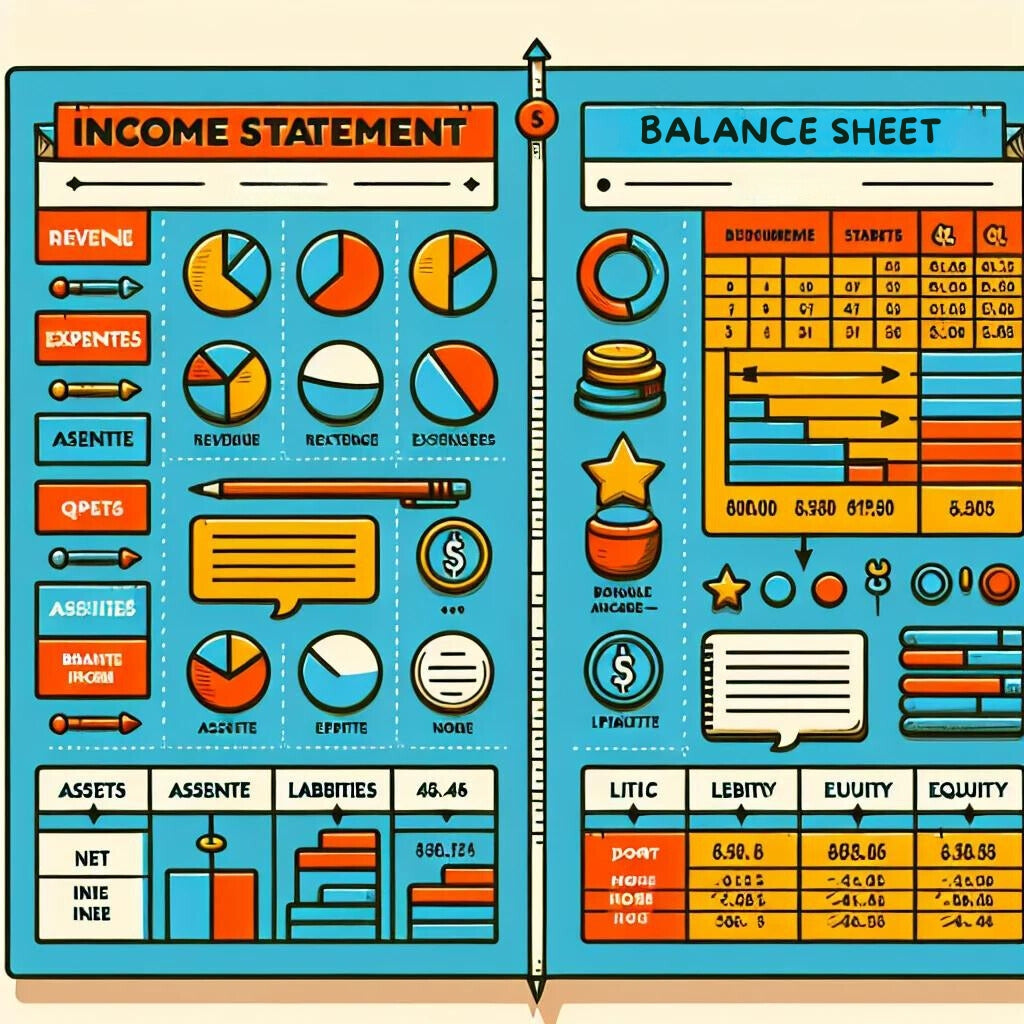When it comes to the financial health of a business, two key documents come to the forefront: the Income Statement and the Balance Sheet. Each serves a unique purpose, offering insights into different aspects of a company's financial situation. In this article, we'll delve into what each document represents, their differences, and how they complement each other in financial analysis.
The Essence of an Income Statement
An Income Statement, often referred to as a Profit and Loss Statement, is a financial report that summarizes the revenues, costs, and expenses incurred during a specific period, usually a fiscal quarter or year. This statement provides a clear picture of a company's operational performance by detailing how revenues are transformed into net income, which is achieved after all expenses are subtracted from total revenues.
The primary components of an Income Statement include:
- Revenues: Total earnings from business operations.
- Cost of Goods Sold (COGS): Direct costs attributable to goods produced and sold.
- Gross Profit: Revenue minus COGS.
- Operating Expenses: Costs related to the business's primary activities.
- Net Income: The final profit after all expenses, including taxes and interest, are deducted.
The Significance of a Balance Sheet
Contrasting the Income Statement, a Balance Sheet is a snapshot of a company’s financial condition at a particular moment in time. It lists the company's assets, liabilities, and shareholders’ equity. This statement is crucial for assessing what the company owns versus what it owes, providing a basis for computing rates of return and evaluating its capital structure.
The key elements of a Balance Sheet include:
- Assets: Resources owned by the company that have economic value.
- Liabilities: The company’s debts or obligations.
- Shareholders’ Equity: The amount that would be returned to shareholders if all assets were liquidated and all liabilities paid.
Comparing the Two Statements
While both financial statements are critical to understanding a company's financial status, they serve different analytical purposes:
-
Time Frame: The Income Statement covers a period (like a month or a year), showing profitability. The Balance Sheet, however, is a snapshot taken at the end of the accounting period, representing the company’s position at that specific point in time.
-
Functionality: The Income Statement provides insights into business performance and profitability, essential for assessing operational efficiency. The Balance Sheet gives a broader overview of financial health, crucial for assessing liquidity and capital structure.
-
Financial Health Indicators: Earnings and expenses on the Income Statement highlight growth and profitability trends. In contrast, the Balance Sheet’s focus on assets and liabilities helps in understanding stability and liquidity.

Conclusion
Both the Income Statement and the Balance Sheet are indispensable tools in financial analysis. Understanding their differences and how they complement each other provides a comprehensive view of a company's financial health. Whether you're a stakeholder looking to evaluate a company's profitability or a potential investor assessing financial stability, mastering these documents is crucial.
Incorporating these tools into your financial analysis arsenal will enable more informed decision-making, ultimately contributing to better strategic planning and investment choices. By analyzing both documents, stakeholders can gain a complete understanding of the financial trajectory and sustainability of a business.

